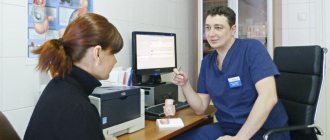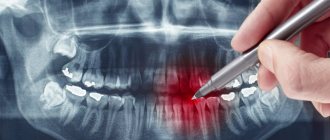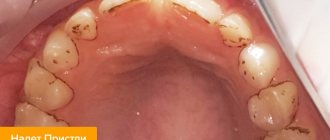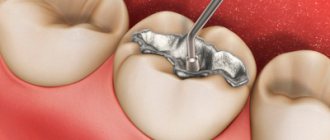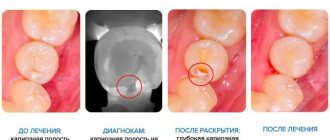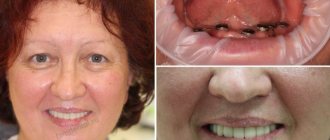The doctor plans orthopedic treatment individually for each patient, taking into account the number and location of missing teeth, periodontal condition and level of health. But there are still general principles for choosing a prosthesis design depending on the extent and location of the defect. For recording in the chart and professional communication between dentists, it is more convenient to use a symbol of the clinical situation, rather than its full description. The classification of dental defects simplifies the algorithm for choosing a treatment plan and filling out documentation.
Subclasses
All of the classes described above, except the last one, also have subclasses that are the same for the three groups:
- the dental unit, in addition to the main one, is missing in one more place;
- no teeth in 2 more places, with the exception of the sides;
- absence of units additional three places, except for the main chewing units located on the sides.
If the dental arch has several defects that belong to different classes, then it is classified into a smaller group. For example, when disorders of the second and third classes are diagnosed in the dentition, the second class is assigned to the arch defect.
There are also many other classifications in dental practice that are less common and not as popular as the Kennedy method. This is explained by the fact that the system he proposed fulfills its main task well, which is to select a more optimal orthodontic design for the treatment of the most common defects of the dentofacial apparatus.
The use of such techniques allows dentists to significantly simplify their work and the life of the patient. In addition, thanks to this method, it becomes possible to choose the most suitable and effective option for attaching the prosthesis used, which allows you to take into account the anatomical features of each patient individually as accurately as possible.
Causes of dental pathologies
There are many reasons why dental defects occur. Among them we highlight the following:
- hereditary predisposition,
- diseases of a genetic nature,
- the beginning of caries,
- various injuries resulting from jaw injuries,
- problems with the endocrine system,
- development of infections,
- secondary pathologies (manifest if there is no timely treatment),
- inflammatory processes in the oral cavity,
- periodontal disease,
- large delays in teething,
- neoplasms in the oral cavity.
Why is it necessary to systematize defects in dental arches?
There are a great variety of different combinations of dental defects. For example, if you try to create a mathematical model of these combinations, including all available characteristics and taking into account the combination of various characteristics. As a result, we get at least 4*109 options, each of which has the right to exist. Such a number of variations clearly shows the need to develop generalized classifications. This is more convenient in practical use and allows doctors from different countries to understand each other.
Classification of partial edentia
The most popular classification of partial edentulism was developed by the American dentist Edward Kennedy. This happened back in the twenties of the last century, but they are still actively working on it. In total, Kennedy identified four main classes of partial edentia, with a focus on which a rehabilitation plan is drawn up.
Kennedy classification of partially edentulous
- First grade.
Partial edentia with bilateral terminal defect: absence of molars on both sides of the jaw. - Second class.
Unilateral terminal defect, when the patient has lost chewing teeth on one side of the jaw. - Third class.
One-sided included defect. Missing some molars or front teeth. - Fourth grade.
Included defect of anterior teeth. Completely missing teeth in the smile area.
Forms of partial edentulous teeth
✔
Primary adentia. Absence or death of tooth buds at the stage of intrauterine development. This form of pathology is quite rare and is caused by hereditary factors or diseases, as well as infections that arise during pregnancy (hypothyroidism, ichthyosis, pituitary dwarfism). Primary adentia is often combined with irregularly shaped teeth or underdevelopment of the alveolar processes. The anomaly is diagnosed more often in the upper jaw than in the lower jaw. In most cases, patients are diagnosed with symmetrical hypodentia of two teeth. This type of deformation is considered the most noticeable, as it is associated with the sound production function. The person’s speech is slurred, has a lisp, and spattering of saliva is observed.
✔
Secondary adentia. A person was born with a full set of teeth, but lost some of them due to injury or dental disease. Partial secondary absence of teeth is a very common disease. According to statistics, more than 75% of people have lost one or more teeth during their lives.
Bite deformation with partial absence of teeth
The condition of the dental system with partial absence of teeth is a topic for a separate discussion. Even the loss of one tooth leads to displacement of the entire dentition. In this way, the body tries to restore the correct load distribution. This process begins in the immediate vicinity of the lost tooth, but over time, the deformation of the dentition with partial absence of teeth becomes more and more pronounced, especially when a significant number of them are lost. The most accurate classification of changes in the position of teeth during edentia was proposed by Dr. E. I. Gavrilov.
Classification of partial absence of teeth according to Gavrilov
- Vertical movement (lengthening of teeth). Often occurs when antagonist teeth are lost.
- Mesial and distal movement.
- Oral and vestibular movement of teeth.
- Combined movement of teeth (rotation with tilting, fan-shaped divergence, etc.).
Correction of dental deformations occurs using orthodontic, orthopedic and surgical techniques. In case of serious disorders, the installation of a prosthesis or implants may be postponed. Determination of occlusion in case of partial absence of teeth includes the calculation of occlusal height, prosthetic plane, height of the lower part of the face and the central relationship of the jaws.
Preventive measures
How to prevent defects from appearing? Preventive measures are as follows: it is extremely important to monitor oral hygiene, undergo regular dental examinations, immediately respond to defects that have formed and eliminate them in order to prevent further development. The main thing is to take care of your health in a timely manner. However, it is best not to let the situation get to such an extent that you have to remove the tooth. If the defect cannot be cured, then contact a doctor: he will conduct an examination and suggest the best option for dental prosthetics.
Kennedy classification with subclasses
Kennedy classification with subclasses
Kennedy's classification of dental defects is used only in prosthetic dentistry, as is the later Betelmann classification. To determine the destruction of the coronal part of a separate tooth, the Milikevich IROPD classification is used; dental therapists in clinical practice use Black’s classification to correctly detail carious processes.
Symptoms
Dental defects have their own symptoms. If treatment is not taken on time, this flaw can only get worse. So, let's list the main symptoms:
- difficulty chewing food,
- incorrect bite,
- distortion of the shape of the dental arch,
- problems with pronunciation of words,
- changes in the jaw bones.
Due to unequal pressure on the dental arches, a strong shift occurs: from areas with high load to areas where there is not enough load. As a result, atrophic changes appear.
This deficiency can be corrected only with the help of timely prosthetics. This area of medicine is practiced by orthopedic dentists. Current technologies, treatment methods and high-quality materials will help the patient cope with the problem.
Included defects are identified when a row of teeth remains on both sides of the existing defect, that is, the defects are located in the middle of the dentition. In this option, the doctor places a bridge prosthesis (“bridge”). If the defect is distal, then it is located behind the fangs and is noticeable on one or both sides. Then the defects can actually be replaced with a removable denture.
Methods for diagnosing and treating partial adentia
Partial adentia is not accompanied by pain. Mostly, patients complain of inconvenience when chewing, speech impairment, and aesthetic defects. Pathology is diagnosed during a visual examination by a dentist. The remaining data for treatment planning is obtained after X-rays and orthopantomography. The purpose of dental diagnostics is to assess the condition of the oral cavity, examine the bite, determine the causes of adentia and the degree of impairment of chewing function. If during the examination inflammatory processes, tumor diseases, exostosis and serious lesions of the oral mucosa are detected, treatment is postponed.
In case of complete or partial edentia, tooth restoration is carried out using two methods: implantation and classical prosthetics. The first method is a priority, since only an implant can fully replace the tooth root and prevent bone tissue atrophy. On the other hand, implantation is not always possible due to contraindications and the patient’s simple lack of funds. In this case, classic prosthetics is the only way out.
Fixed bridge prosthesis
This is the most popular option when restoring one or more missing teeth in a row. The prosthesis is attached to supporting healthy teeth or telescopic crowns. Often, when restoring one tooth, a depression is made in the adjacent teeth, after which the structure is connected with a special bridge, which is fixed using composite materials (Maryland prosthesis). The bridge can be metal, metal-ceramic and ceramic (for restoring the frontal group of teeth).
The main advantages of prosthetics:
- relative durability;
- lower cost compared to implantation;
- good functional performance.
Disadvantages include the need to grind adjacent teeth, possible allergies to metal components, and mediocre aesthetics.
Dental crown and bridge on implants
It is used for a single defect and in the same situations as a classic bridge, but supported by implants rather than adjacent teeth.
- good aesthetics and functionality;
- preservation of bone tissue volume at the implantation site;
- durability.
- high price.
Removable and conditionally removable dentures on implants
They are installed in the case of multiple edentia, when the doctor removes the remaining teeth and places a structure supported by implants that completely imitates the jaw. The type of prosthesis (removable or conditionally removable) depends on the method of attachment. The push-button fastening allows you to remove the prosthesis from the mouth yourself. When using a beam fastening (implants are connected to each other with a special beam), the prosthesis is removed only in the dentist’s office.
- reliability;
- good functionality and acceptable aesthetics;
- durability (an old prosthesis changes after 7 - 10 years, implants can last for life).
- The disadvantages of removable and conditionally removable prosthetics on implants include the need to remove remaining teeth and high cost.
Gavrilov system
E.I. Gavrilov is a Doctor of Medical Sciences, a prominent scientific figure of the Soviet Union. His goal was not only to restore aesthetics to the dentition, but also to restore functionality and distribute the load over all areas of the jaw. The systematization developed by Gavrilov defines a detailed description of the problem, which helps the doctor determine a treatment regimen. The scientist systematized the problems into 7 groups.
Do you feel nervous before visiting the dentist?
Not really
I class. This includes defects on the right and left sides of the end of the dental arch.
Treatment options:
- clasp denture with cast clasps gently acts on the teeth that serve as support;
- removable partial plate denture. There are disadvantages - weak fixation, the likelihood of tipping over while eating due to one-sided load;
- prosthetics with implants - a fixed prosthesis that restores the functionality of the jaws without stress. If there are no contraindications, then this option is considered the best.
II class. This group includes defects when the distal support of one of the jaws is lost. Prosthetic options are selected similarly to the conditions. The bilateral presence of problems at the ends of the jaws ensures fixation of the removable denture, the load is evenly distributed along the row. When choosing designs, they choose a clasp denture when it comes to problems of the upper jaw. Thanks to the metal arc, it is possible to reduce the dimensions of the plate, and the sky remains open.
For conditions belonging to this group, you can choose fixed prosthetics. This method of restoring the functionality of the jaw is acceptable when installing implants. For situations where teeth have long been lost and there has been no treatment, bone deficiency becomes a sign. Technologies make it possible to carry out an operation to increase it. If there are no contraindications and hygiene skills are satisfactory, then prosthetics with implants will be an effective solution to the problem than removable structures.
III class. This group includes defects accompanied by the absence of molars, provided that the extreme molar is preserved.
The dentition can be restored with removable, fixed dentures of the following types:
- removable clasp prosthesis. A good option, but not comfortable. The disadvantages are due to the fact that the structure is removable, and with a one-sided effect it overturns;
- a bridge-like structure, one of the supports of which is fixed on the chewing tooth. This is an inexpensive prosthetic option. The advantages of the method include the reliability of fixation, the disadvantages are the load on the supports. Contraindications to choosing a bridge include periodontal disease and mobility of dental units;
- Implantation occupies a leading position. This method provides maximum comfort and physiology identical to natural. The load on the supporting teeth is eliminated, healthy tissues do not need to be ground down, but chewing and aesthetic functions are completely restored.
IV class. This group includes conditions when the side sections have flaws, but the distal supports are preserved. Options for eliminating the problem are similar to those indicated above, but clasp dentures no longer have any disadvantages, since here the load is evenly distributed over all teeth.
V class. Includes conditions in which several units are missing from the front of the soul. Bridges and removable dentures will help restore the dentition. To ensure reliable fixation, clasps are used. Such fastenings are noticeable on the teeth, so the aesthetics will not be up to par. Considering that we are talking about teeth involved in a smile, this method of treatment should not be preferred. Bridges, if they have strong supports, provide excellent functionality, but they look unsightly, especially if there is a gap between the gum and the neck of the artificial crown.
Unlike previous treatment methods, implants have virtually no disadvantages (except for price). They are able to restore lost aesthetics and chewing function. One-stage implantation becomes preferable, in which the tooth is removed and an artificial root is immediately installed in its place. This allows you to preserve the shape of the gums, the amount of jaw bone tissue, and creates optimal conditions for wound healing. The result obtained in terms of aesthetic indicators has no equal.
VI grade. This includes combined defects. Planning is carried out taking into account the identified problems.
VII class. The last group includes all pathologies in which there is only one tooth left in the mouth.
Systematization according to Gavrilov is used by orthodontists; it allows choosing the optimal design for prosthetics in a wide variety of conditions. Then single teeth were used as support for removable dentures. This practice was widespread in relation to problems of the lower jaw.
Thanks to implantation, there is no longer a need to save a tooth if there is little reason to do so. Implants can become a support for various orthodontic structures in the presence of single teeth or complete edentia.
